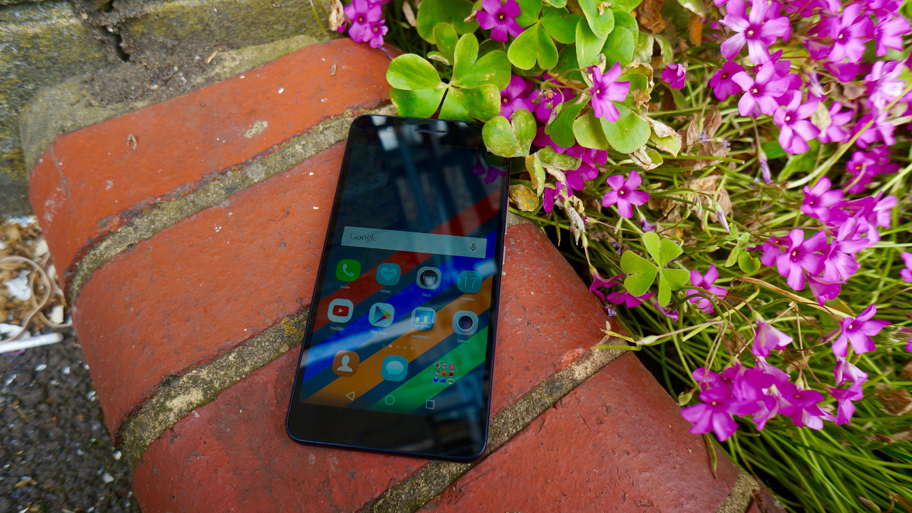Why you can trust TechRadar
I might have come down hard on the Emotion UI, but I do have to give it credit in one area - it's definitely snappy. Scrolling through websites, swiping through menus and banging out emails don't cause the phone any problems.
Although the processor isn't really top-of-the-line (it's a 2014 HiSilicon Kirin 925 chip with a quad-core 1.8GHz CPU), it does have the benefit of an impressive 3GB RAM. This is 1GB more than the iPhone 6 Plus and on-par with nearly all the flagship devices we've seen churned out this year.
Multitasking is a breeze. I can open 10 apps and switch between them without so much as a stutter, while my usual set of apps doesn't even slow things down.
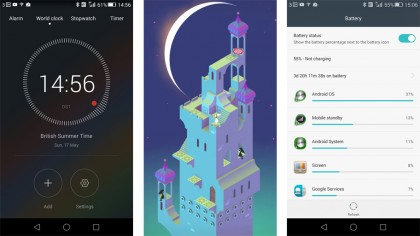
Gaming isn't quite so great, though. I loaded the Honor 6 Plus up with a variety of titles, from my favourite mobile game Monument Valley, to more testing releases like Real Racing 3, Asphalt Airborne and Dead Trigger 2.
Monument Valley performed the best, as you'd expect; it was smooth and quick, and as always, a pleasure. Real Racing 3 also played quite well, though loading times were quite lengthy and frame rate drops were frequent.
Asphalt and Dead Trigger suffered fairly constantly from the latter. They were still playable, but if you're a real Android games aficionado (do those exist?), you might be looking at the wrong device.
In my GeekBench 3 tests, a multi-core score of 3247 easily outpaces devices like Samsung's S5, the Nexus 5 and the OnePlus One, confirming just how speedy this phone seems to be.
Sign up for breaking news, reviews, opinion, top tech deals, and more.
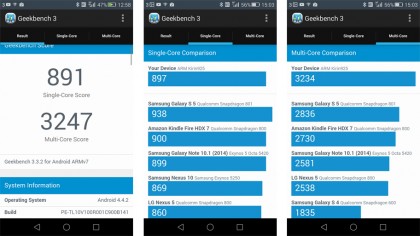
HD videos load quickly, and even text and image-heavy sites, like TechRadar, only took a matter of seconds to come to life.
Battery
I've come to expect these big phablet-like devices to impress not only in the display department, but in the battery one too. Having a larger device means there's more room to fit in a bigger battery.
I still remember the first time I used a Samsung Note device: I went to charge it one evening and saw it was still on 60% battery after a full day's use.
Keeping the Honor 6 Plus chugging along all day, hopefully, is a non-removable 3,600 mAh battery. That's one of the largest cells I've seen on a phone, a full 500 mAh more than the OnePlus One and 400 mAh than the 6-inch Nexus 6.
With the Nexus 6 having to power a seriously pixel-dense QHD display as well, I had high hopes that the Honor 6 Plus could be a real winner in the battery department.
Was I right? Yes. And then some.
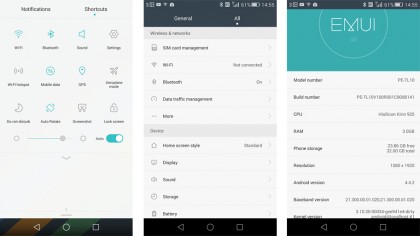
I started off by running TechRadar's typical battery test, which involves playing a looped 90-minute HD video with the screen on full brightness. When it was finished, I had only lost 5% battery. That's impressive.
Battery tests are one thing, but it's the real-life, day-to-day performance that makes or breaks a battery.
Here's my typical day. I unplug my phone at 8am, check emails, Twitter and Instagram, and try to read some news to fully wake me from my bleary-eyed slumber. There have been times when my morning browse has depleted my iPhone 6 by as much as 10%, but the Honor 6 Plus barely budged from 100%. I began wondering whether I could leave my hefty charger at home...
By lunchtime I was sitting pretty on 90% - that's with three accounts constantly pulling down a stream of picture-heavy press releases along with the ever present social network refreshing and browsing. I stream all my music from Spotify and listen to a number of podcasts through PocketCasts, but even with constant use, the phone still had 70% left at the end of the working day.
It's been a while since I purposely left a phone off charge overnight. But as the Honor 6 Plus was at 56%, I thought I'd leave it unplugged. In the morning it was still at 50% and I didn't have to reach for the plug until 7pm to juice it up again.
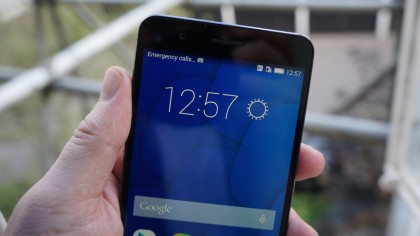
There might not be any mod-cons like Qi wireless charging, quick charging tech or the like, but the Honor 6 Plus is definitely a device that can go the distance.
The essentials
With the addition of the Emotion UI comes a shed-load of Huawei apps, replacing the usual array of Google ones. Google's versions are still here, tucked away in a folder, but Huawei wants you to use its own.
These apps are fairly sleek and minimal. The dialler is nice, though doesn't pack any extra features like searching the web for incoming numbers, and it actually combines the messaging app.
As with most Android phones, you've got the choice of two browsers, two music apps, two video apps, two email apps, and so on. Each of Huawei's stock apps are fine (some are quite pretty and I've come to like the Clock app), but I wish OEMs would just use Google's apps as they're far more intuitive and integrated.
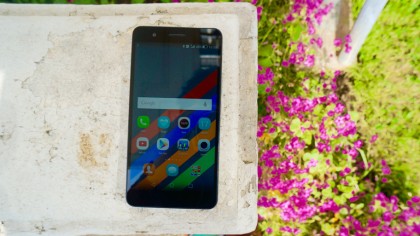
You can't delete any of the pre-installed apps, so you'll also be stuck with a Browser you'll probably never use.
I normally use Google's stock keyboard with Android devices, though Huawei ships the Honor 6 Plus with its SwiftKey-style swipe version. Despite its accuracy, I found word prediction poor and it didn't take me long to ditch it for some better available options.
Call quality was great on both ends, though the back-facing speaker was a little bit tinny and easily blocked if my hand was in the wrong position.
A bit like HTC and Samsung have offered with their recent flagships, Huawei has built a theming engine into the Emotion UI. These change all the icons, the lock screen, fonts, and so on. Sadly, they're all a bit gaudy for my liking and none of them seem to change the icons to anything better looking, but at least the choice is there.
Camera
Android phone cameras are having a bit of renaissance this year, with the LG G4 and Samsung Galaxy S6 finally starting to give the iPhone a run for its money.
I wasn't expecting much from the Honor 6 Plus, but it's actually a fairly decent snapper with a few nifty additions.
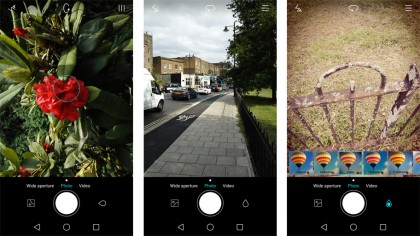
First off, you've not just one 8MP sensor, but two. This isn't something new; HTC kitted the One M8 out with a second depth sensor to garner more information about your shots, but that feature was quickly ditched this year with the M9.
It's used for a similar function here, letting you take parallex photos that move and alter the focus after the fact.
I'm not really a fan of this 'fake' aperture shifting effect. To get anything like the blurring background look you'd get with a DSLR, you need to pick the perfect subject and line the shot up precisely. I just don't have the time to do this when I'm trying to get the best shot.
8MP, the same as the iPhone 6 and 6 Plus, is probably a little bit on the low-side, but I don't think megapixels really matter, especially if the sensor is high quality.

The first lens has a f/2 aperture, and the second has a f/2.4, but the results are quite good.
You do need to play a bit with the settings. On standard, snaps are a little dull and lack vibrancy. HDR mode improves this somewhat, adding an extra hit of colour and improving the dynamic range, though you'll have to suffer with fairly slow capture times with this enabled.
Pictures themselves are nice and detailed, especially if the conditions are in your favour. Night-time shots were less impressive, but they were far from a blurry mess.
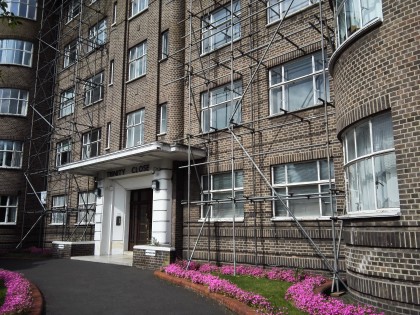
If two 8MP shooters weren't enough, Huawei had added another one around the front. This captures good, detailed selfies that, if I was that sort of person, I'd be happy to filter and throw on Instagram.
